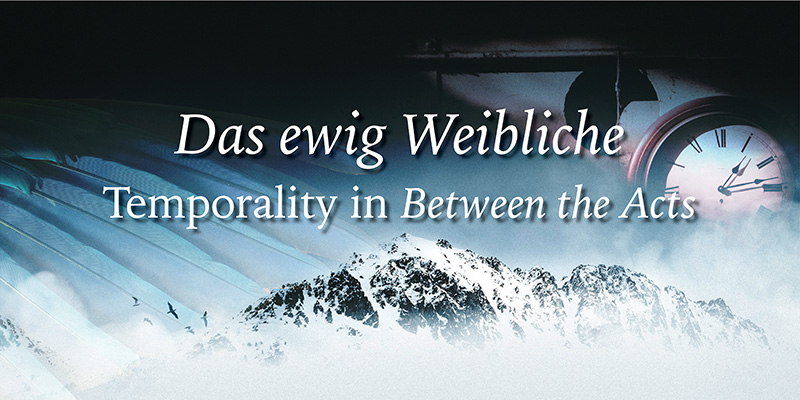Full Title: “Das ewig Weibliche: Temporality in Virginia Woolf’s Between the Acts”
Conference: 14th Annual Conference of the Modern Studies Association (MSA 14)
Location: Las Vegas, NV
First Presented: October 18, 2012
Original Abstract
Effectively representing time within literature poses a unique set of challenges. Time is an abstraction that is primarily understood through the medium of metaphor. We rely heavily on figurative language to expressing its passing. Moreover, there is an inherent disconnect between textual time, the time represented in the narrative, and readerly time, the time perceived by the reader and passing during their reading. Authors must mediate between both, so the reader can successfully navigate the narrative flow.
With a new-found focus on illustrating the subjective experiences of the individual, Modernist writers not only had to seek out new methods of expressing time, but also represent an additional timescape: the interior of the character’s mind. Authors such as Woolf, Joyce, and Richardson relied on stream-of-consciousness to express this new temporality. However, as a narrative device, it has limits. It cannot adequately illustrate the individuated time of multiple characters simultaneously for any significant duration of time. It is best suited for single moments or individuals.
While Modernist writers experimented with a variety of ways to overcome this limitation, this paper will examine Virginia Woolf’s final experiment, Between the Acts. It will explore how Woolf dealt with the problematic issue of rendering the diversity of human-experienced time and the technical choices she made with this last novel to achieve her aim. Ultimately, I hope to demonstrate how the unique cinematographic organization of Between the Acts continually dislocates the reader’s perspective and, in the process, sacrifices the individuation of the characters, transforms them all into performative figures, and allows Woolf to present a coherent representation of lived time.
Full Text: CLindner_CP_Das_ewig_Weibliche
Addendum
One of the possible outcomes of any scholarly or intellectual debate is that someone else will take issue with your premise. At this particular conference, one my fellow panel members presented a paper that came to the opposite conclusion using the very same texts. It was an interesting moment for me personally. It forced me to reassess my assumptions in situ and decide if I had misread a work and/or interpreted some argument incorrectly.
Unfortunately, I was never able to discuss the difference with her to any significant degree at the conference. Time did not permit it. While I still have a draft of her paper, that is like having a car’s frame—you have the basic outline and layout, but you’re missing all the essential components. I know we shared the same sources and parts for our respective analytical vehicles, but that is the extent of my knowledge. I will likely never know where or how our thoughts diverged into two separate paths. For me, that is a small tragedy.
One of the major benefits of attending a conference is the ability to commune and communicate with others that share your interests. While some go to Comic-con to gawk at the cosplay and the over-the-top exhibitions, most go because they can find others that like what they like and see authors and artists they admire. How regrettable it is that the larger the conference, that the more people gather together, the more isolated the individual attendees feel. An outcome that is literally antithetical to a conference’s very purpose for existence.
As for the paper itself, it is not so much an argument, but a rumination on the subject of time. Time as represented in literature is an interesting subject. In actuality, it is a fascinating subject regardless of medium. How does a work convey the passage of time beyond simple statement of the fact? For instance, how does Blade Runner 2049 illustrate 30 years have past since the events of the original Blade Runner? How does it maintain a temporal connection? Does its represent the passage of time effectively or confuse viewers?
The issue with examining such an abstraction as time is the result is abstract at best. In this case, my paper moves from literary analysis into philosophical mediation and back again. Grounding the paper in a work such as Between the Acts, which clearly deals with the conception of time, does provide a solid foundation for exploration. However, I provide no definitive claim. I merely demonstrate how Woolf’s attempt to represent time resulted in the reduction of the characters to allegorical representations akin to those found in Bunyan’s Pilgrim’s Progress.
